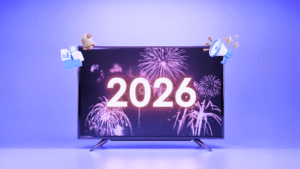Every day, new information about your brand is popping up across countless media outlets. As a PR professional, it’s your job to turn that data into a clear, concise report. Tailoring your report ensures it provides actionable insights—whether for executives who need high-level takeaways or your PR team who requires in-depth analysis to refine strategies.
In this blog, we’ll show you how to create a comprehensive media report that delivers valuable insights you can act on.
Why Should You Use A Media Report?
A well-crafted media monitoring report offers detailed insights into media coverage, competitive analysis, industry trends, and sentiment analysis. It allows you to turn your PR strategy into a data-driven, impactful approach, helping you make informed decisions moving forward.
What should you include in a standout media report?
The key to a strong media report is turning all that complex data digestible and easy to understand. Here are the must-have data points:
Media coverage: Where was your brand mentioned, and how often?
Tracking your brand’s mentions across social media, blogs, news outlets, and more helps you assess the scope of your reach. This data is crucial for understanding which platforms are driving visibility.
Sentiment analysis: How is the public reacting?
By analyzing the tone of the coverage—positive, negative, or neutral—you can gauge how well your messaging is landing and identify areas where adjustments might be needed.
Share-of-Voice: How do you compare to your competitors?
SOV measures your brand’s presence relative to competitors and gives you insight into where you stand in the broader conversation and where you can improve.
Key topics: What’s driving the conversation?
Understanding the themes and topics driving media coverage helps you see whether your key messages are hitting the mark and what’s capturing attention in your industry.
Top authors and publishers: Who’s shaping your narrative?
Knowing which journalists and outlets are covering your brand allows you to build stronger relationships with key media players, making future outreach more effective.
Impact metrics: How did your PR efforts perform?
Track essential metrics like reach, engagement, and Advertising Value Equivalency (AVE) to quantify your campaign’s success. Use these insights to refine your strategy and celebrate wins.
Executive summary: Need a quick overview for stakeholders?
Summarize your key findings into a concise snapshot for stakeholders who need the big picture without diving into the details.
Tips and best practices when creating a media report
Speak to your audience: Tailor the report
Who’s reading your report? For executives, focus on high-level insights like media reach and sentiment analysis, keeping it brief and strategic. For your PR team, dive deeper into specifics such as competitor analysis and detailed performance breakdowns. Tailoring your report ensures that the information is relevant and actionable for whoever is reading it.
ALSO READ: Why Monitoring Your Brand’s Social Media Sentiment Matters
Show, don’t tell: Use visuals
Data can be overwhelming when it’s all text. Bring your report to life with visuals—charts, graphs, and color-coded elements make your data easier to understand and far more engaging. Visuals help readers focus on key points without getting lost in the numbers.
Cut the fluff: Focus on key metrics
Not every metric adds value. Stick to what matters—metrics that align with your media goals, like reach, sentiment, and engagement. Avoid overloading the report with vanity metrics that don’t provide real insights. This keeps the report concise, actionable, and to the point.
Make it skimmable: Structure for quick reads
Time is valuable. Organize your report with clear headings, bullet points, and straightforward language to make it easy to skim. Busy readers can quickly find key takeaways, boosting the chances that your recommendations will be acted upon.
Use tools to streamline data collection
Save time and effort by using media monitoring tools to gather and organize your data automatically. This frees you up to focus on analyzing the data and offering deeper insights, making your report even more valuable.
Sample media monitoring report
Here’s a simple template to structure your media report:
- Table of contents
- Media analytics dashboard: Dive into comprehensive visual analytics showcasing key insights and metrics driving the company’s performance.
- Overall media coverage
- Distribution across various media channels
- Comparative Share-of-Voice (SOV) analysis
- Coverage overview: Concise snapshot of media presence and reach, offering insights into the extent and impact of the media coverage.
- Comprehensive analysis of media presence in different media channels
- Top publication/s
- Top author/s/
- Total Ad Value Equivalency (AVE)
- Narrative timeline
- Tonality analysis
- Share-of-Voice (SOV): Comparative overview of the media presence against competitors, offering valuable insights within the industry landscape.
- Story highlights: Overview of the story that gained the most traction.
- Total article count
- Total AVE
Ready to streamline your media reporting?
Creating a media report doesn’t have to be overwhelming. With the right structure, tools, and focus, you can deliver clear, insightful reports that drive your PR strategy forward.
Take the next step with Media Meter! We provide real-time media monitoring services to help you track your brand’s performance across platforms. Contact us to learn more or check out our sample reports today!
-
Richelle is a writer, researcher, and a content marketing specialist at Media Meter Inc., turning complex media data into compelling narratives. With a background in research and data analytics, she combines attention to detail with a strategic approach to create content that resonates and drives results, helping brands forge meaningful connections with their audiences.
View all posts




